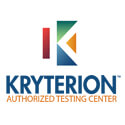Configuring and Deploying a Private Cloud (70-247)
About This Course
This course arms professionals with the required skills and expertise required for deploying and configuring a cloud with the help of MS System Center 2012. Most importantly, the course trains on ways to manage all your virtual clouds in one place. It prepares you for the MS 70-247 exam i.e. Configuring and Deploying a Private Cloud with System Center 2012.
The Configuring and Deploying a Private Cloud course is aimed at cloud administrators involved in configuring, installing and designing cloud infrastructures.
Who Should Attend This Course
This certification course is ideal for all those cloud administrators involved in installing, configuring and designing cloud infrastructures.
Why This Course
The Configuring and Deploying a Private Cloud course covers all the skills required to pass the 70-247 exam.
Some key skills you learn are as follows:
- Designing scalable architecture for System Center
- Installing System Center Infrastructure
- Upgrading components for System Center
- Configuring components for System Center
- Configuring dashboards and portals
- Configuring storage fabric
- Configuring network fabric
- Configuring and managing deployments and updating servers
- Configuring hosts for clouds and virtualization
- Configuring integration for private clouds
- Configure integrations of public and private clouds
- Configuring profiles
- Creating and configuring server App-V
- Configuring and deploying a service
- Updating a service
Course Objectives
- Designing and deploying System centers
- Configuring System center infrastructure
- Configuring fabric
- Configuring System center integration
- Configuring and deploying virtual services and machines
Course Prerequisites
- Basic knowledge of cloud and its infrastructure
- Experience in networking
- Knowledge about System Center’s previous versions
- Understanding of data center management
Course Benefits
The Configuring and Deploying a Private Cloud course offers a broad coverage of skills and knowledge required to pass the 70-247 exam.
Some of the key skills you learn are as follows:
- Designing scalable architecture for System Center
- Installing System Center Infrastructure
- Upgrading components for System Center
- Configuring components for System Center
- Configuring dashboards and portals
- Configuring storage fabric
- Configuring network fabric
- Configuring and managing deployments and updating servers
- Configuring hosts for clouds and virtualization
- Configuring integration for private clouds
- Configure integrations of public and private clouds
- Configuring profiles
- Creating and configuring server App-V
- Configuring and deploying a service
- Updating a service





























